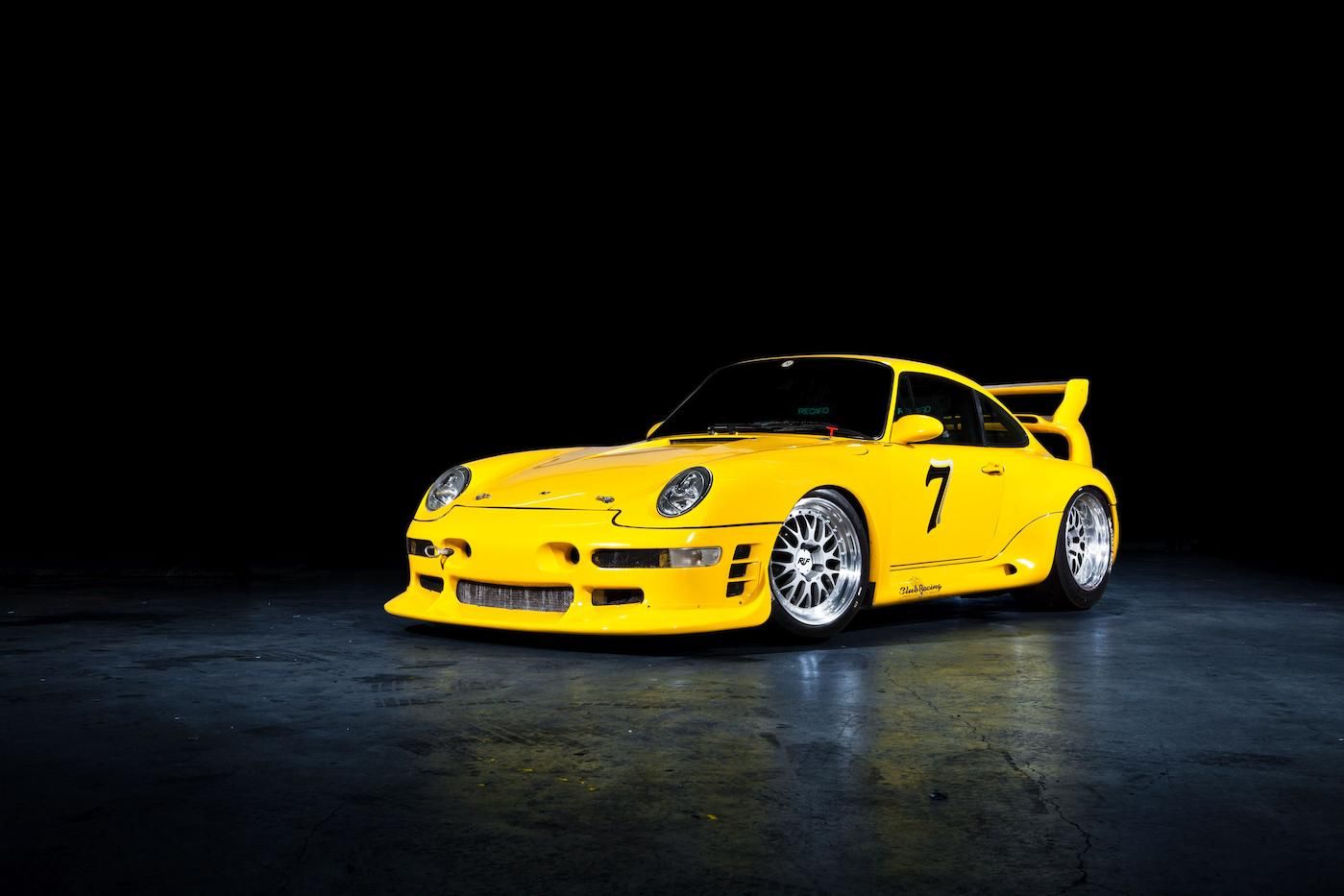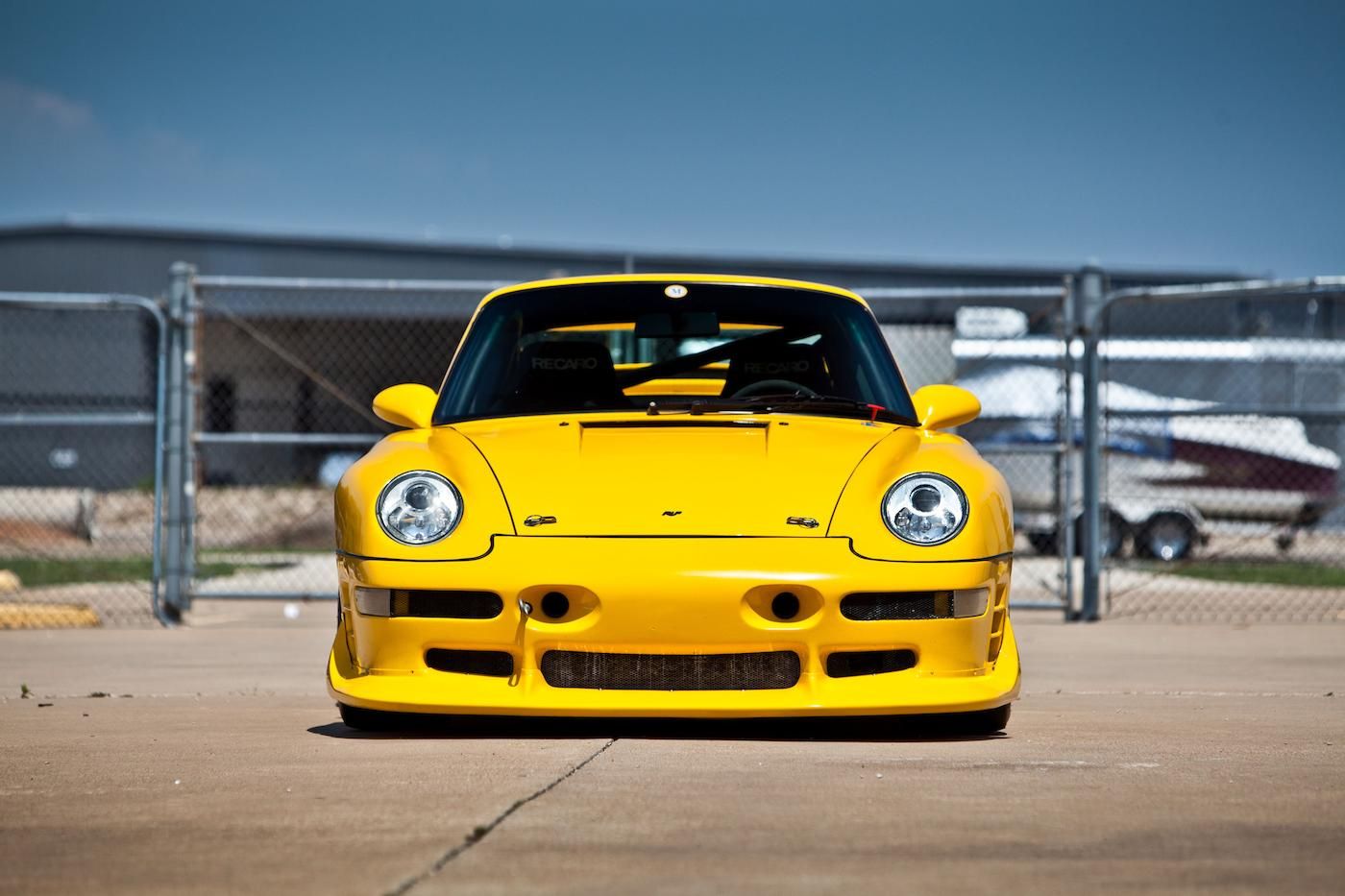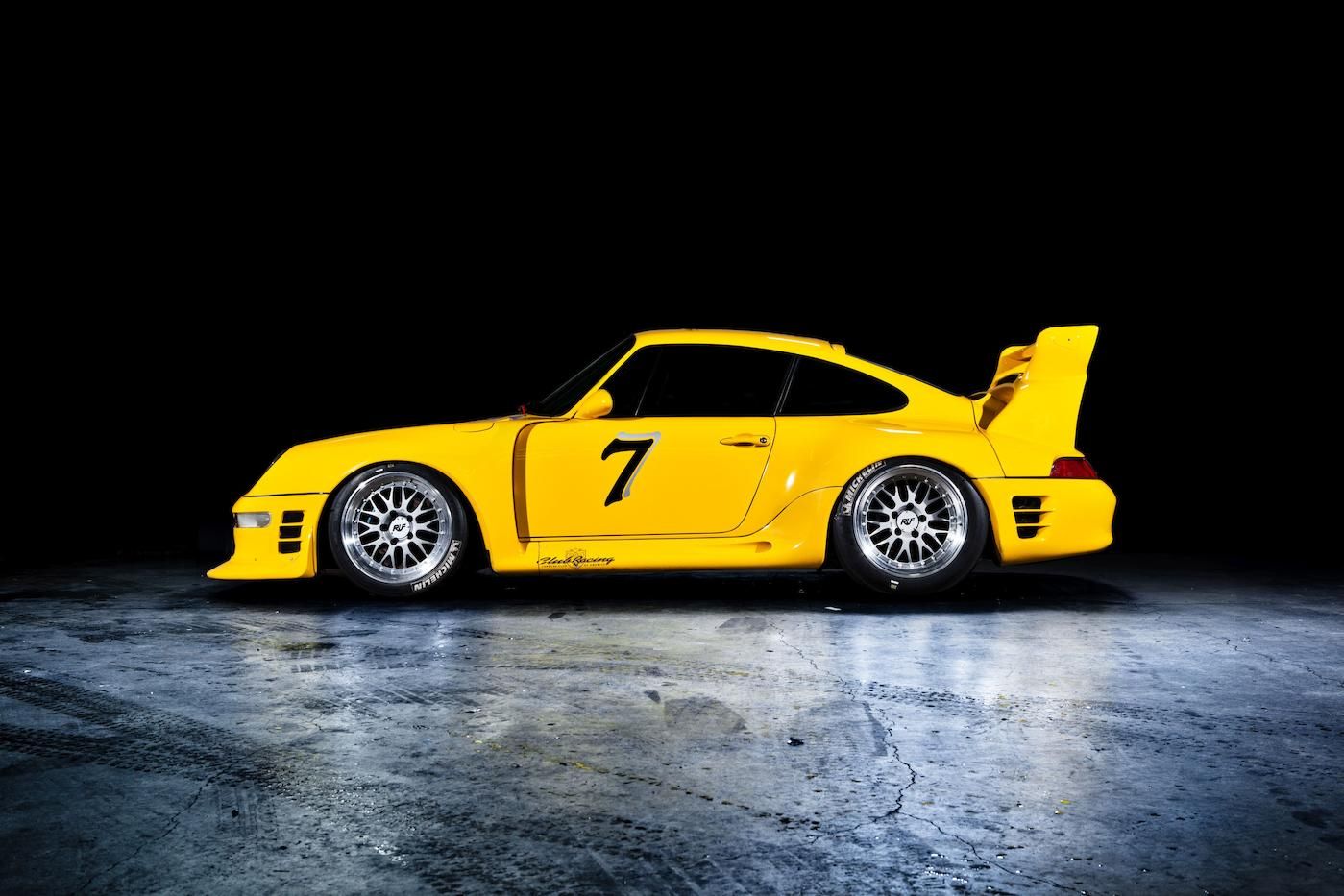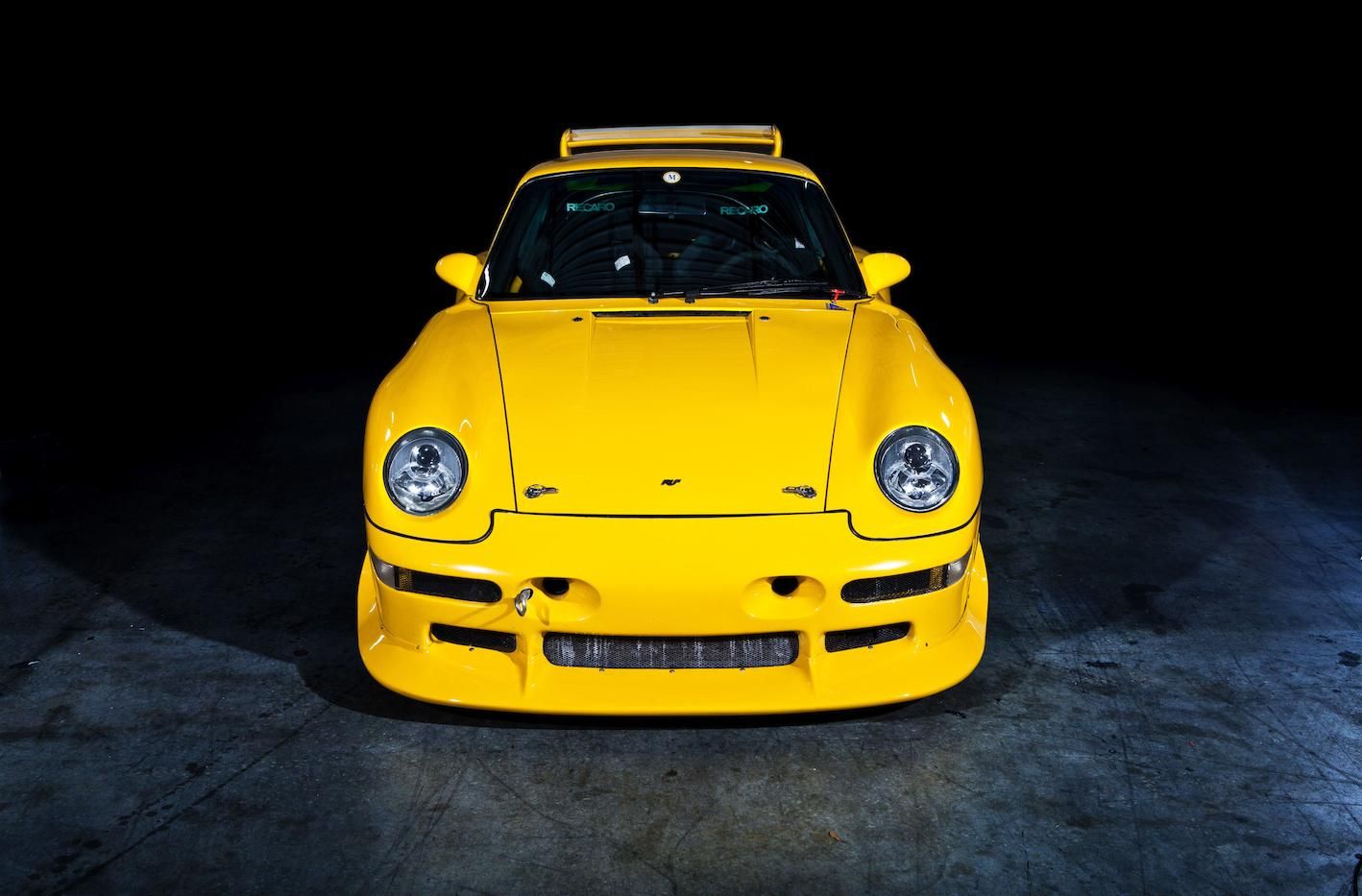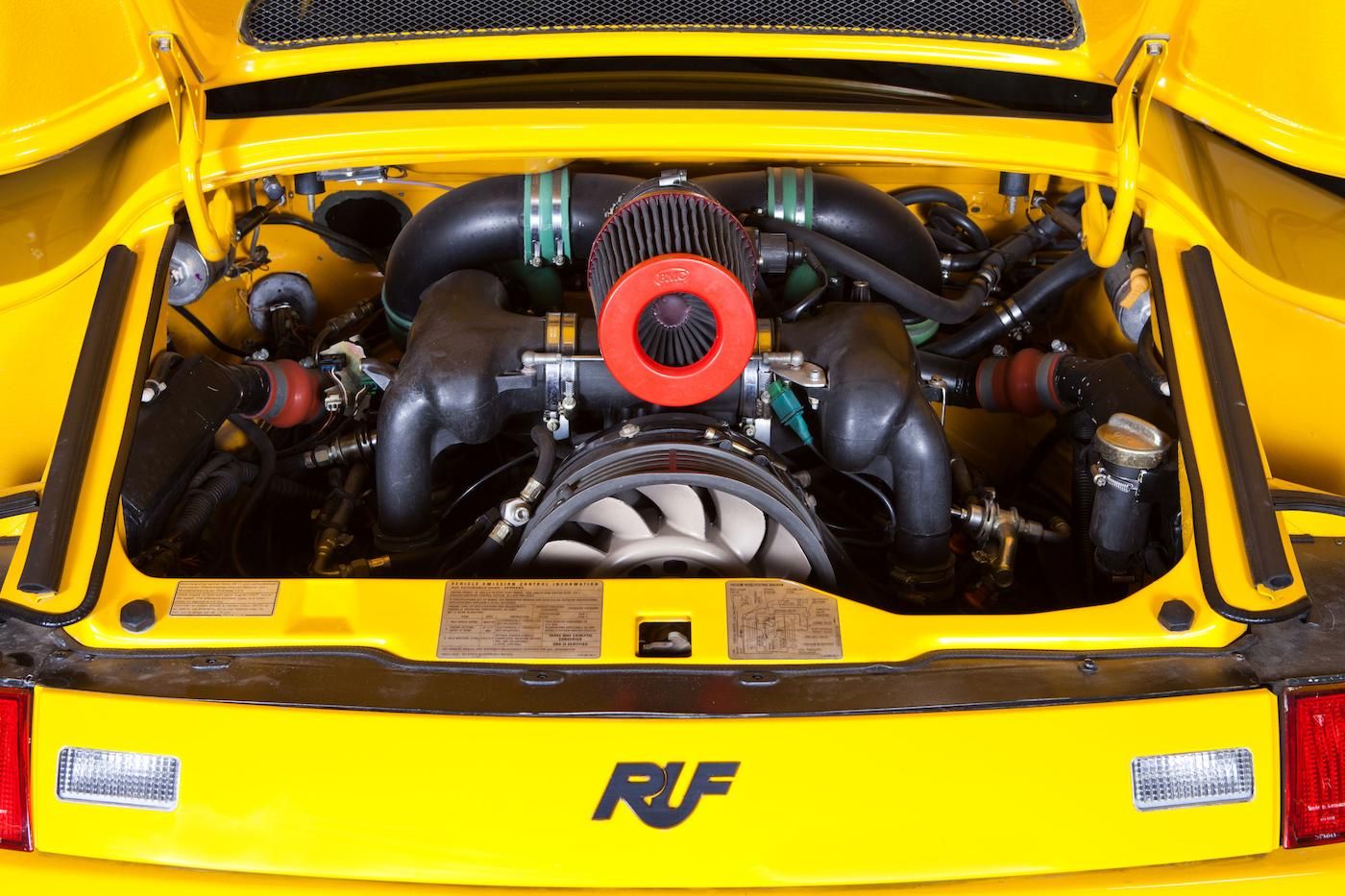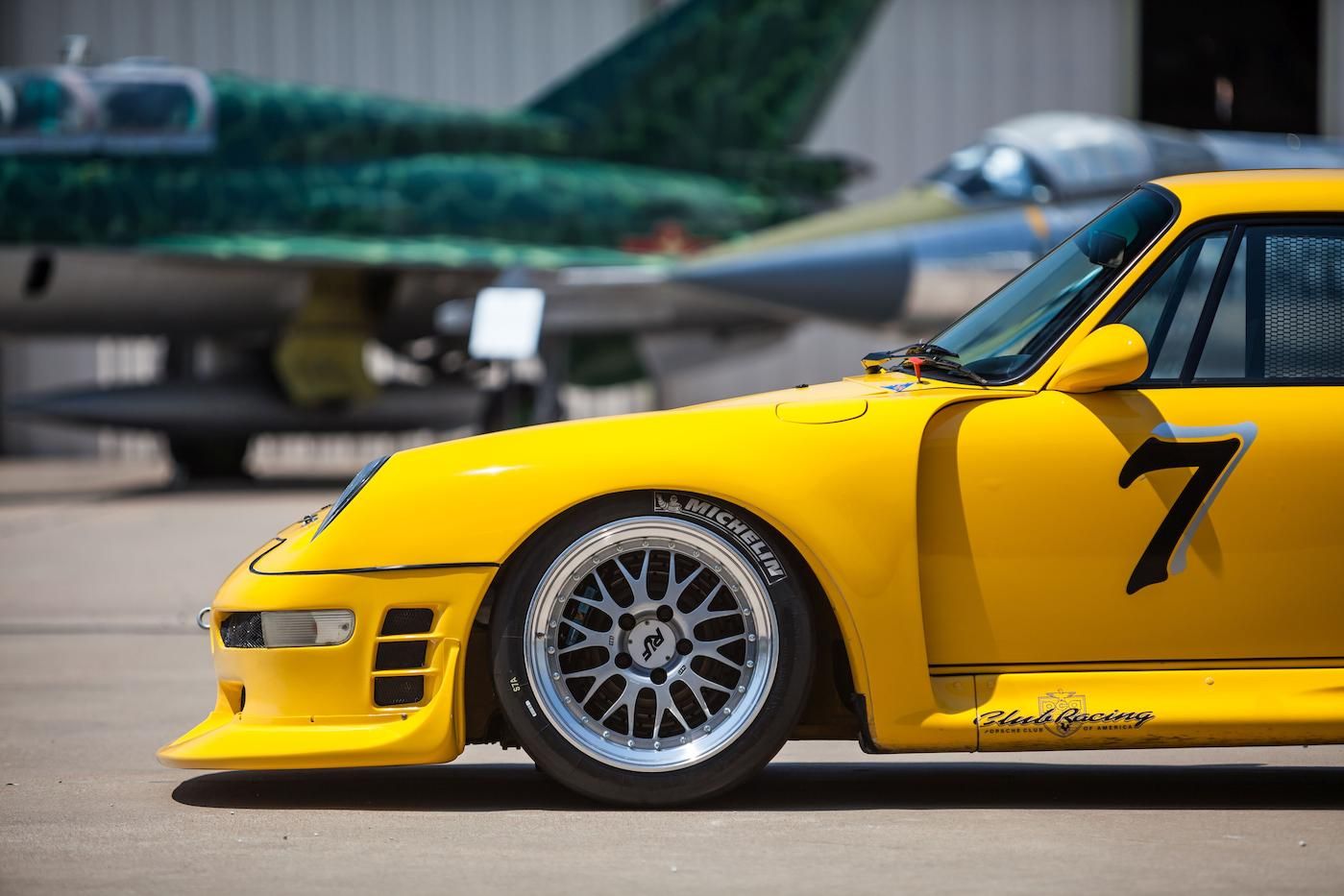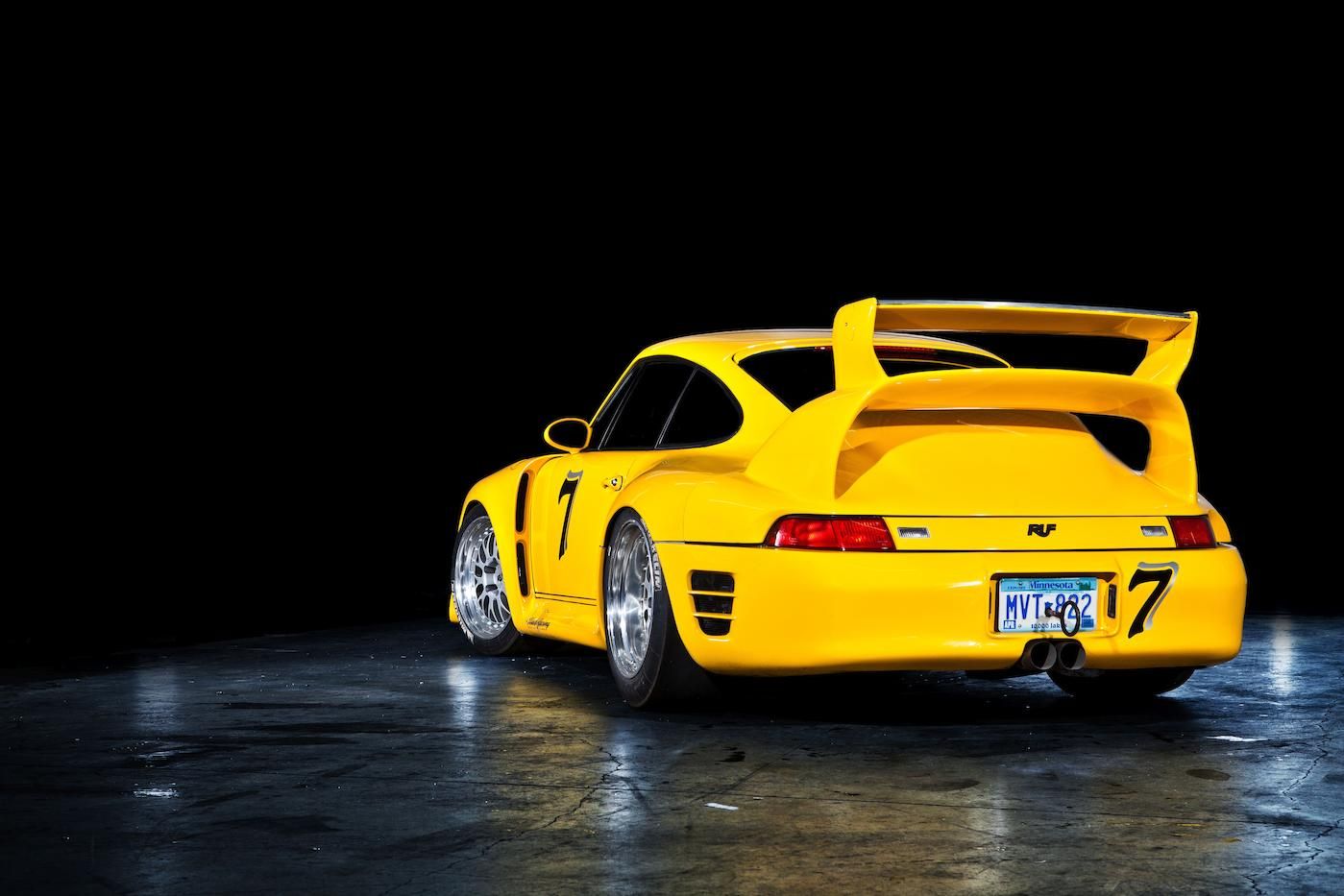RUF, the mad scientists from Germany who take usual Porsches and make them bonafide supercar-killers, built two special RUF CTR2s to humiliate other mortals at Hillclimb and circuit events. With 702 horsepower on tap, these Sport Prototype examples were probably the fastest road legal Porsches in the world in the late '90s and, now, one is up for grabs at the upcoming Bonhams Paris sale on February 7th.
As far as supercars go, the RUF CTR2 is an unsung hero. Every car nut has heard of the mad CTR and its 213 mph F40-crushing top speed. Everyone has seen it being thrashed around the Nurburgring-Nordschleife in that period VHS video that might as well be one of the first 'viral' automotive videos on the world-wide-web. But not too many people know about the CTR's replacement, the CTR2.
RUF again built very few of these around the chassis of a 993 Turbo, so it's unlikely you'll ever see one. However, if you do, allow yourself a few moments to just gaze upon it while trying to breathe normally because this is automotive royalty although the bulbous bodywork could mislead you into thinking this is yet another weird tuning job from the '90s.
An Ex-Pikes Peak RUF CTR2 Sport for $1.5 Million? A Bargain!
RUF started out as just another Porsche tuner in the '70s but, by 1981, the company based in Pfaffenhausen had built its first car, the BTR. It had a 3.4-liter boxer engine, increased from the 3.3-liter standard displacement, with a big Borg-Warner turbocharger strapped to it. There was also a new intercooler and bespoke suspension parts that could keep the car steady when the resulting 370-odd horsepower was deployed down the road. The 5-speed manual gearbox was also bespoke, and RUF built the BTR2 and BTR3 evolutions in the ensuing period of time, again based on the 930 Turbo.
Then, in 1987, RUF dropped the ball with the CTR, a further step ahead in the direction of all-out performance as the company moved from B to C - and it's still at letter C to this day so expect a "DTR" model to be groundbreaking if it ever gets made. The CTR, nicknamed 'Yellowbird' for its yellow body color, was released the same year as the F40 and, obviously, the last car that received the blessing of Enzo Ferrari himself overshadowed the modified Porsche derivative. In all seriousness, though, the 'CTR' name derives from Group C, Turbocharged Ruf. What's the link with Group C?
Everybody hailed Nicola Materazzi's creation as a perfectly balanced machine, the first to break the 200 mph barrier and, thus, the fastest production car in the world. Only it wasn't, not even close. Road & Track, Auto Motor und Sport and French magazine Sport Auto were among the publications that put the CTR to the test in period and, lo and behold; it was faster. Not by a mile or two, but by 10 and some owners even pushed their CTRs further!
The CTR2 arrived in the mid-'90s and, by then, Porsche had moved on from the 930, and on to the 993 so RUF followed suit and based its new creation on the Turbo'ed version. This time, however, the German craftsmen took extra time to modify the bodywork. As such, the CTR2 has a new front bumper with bigger air intakes up front and on the sides next to the wheels, wider wheel arches to fit RUF's own wheels and bigger tires as well as a redesigned rear bumper and two-step wing that helped to keep the tail end glued to the ground and speed and also directed air to the dual intercoolers mounted on top of the engine on either side.
With the whole thing weighing just 2,994 pounds, the CTR2 could accelerate from a standstill to 62 mph in just 3.6 seconds as recorded by Auto Motor und Sport at the time.
A total of 11 CTR2s were built and, on top of those, RUF also built 16 CTR2 Sport models. Among the 'Sport' versions, which are more track-focused, the first two are particularly special. One of them, chassis #W09BC0364VPR06011, will again be up for grabs at the upcoming Bonhams Paris auction. This car is the 11th CTR2 built, and the first Sport model ever put together. Designed for the "RUF customers deprived of the unlimited speeds of the German Autobahn," the Sport version was, by all means, a track day but this prototype and the one built right after were a bit more than that.
In an attempt to showcase what RUF cars can do in a world-class event, Alois Ruf and his team set about building these cars to be FIA-compliant safety wise and then dully entered them in the 1997 edition of the Pikes Peak International Hillclimb event in Colorado. The two cars, which received further body modifications - you'll spot right off the bat the two extra round air vents that pierce through the front bumper, for instance - also had more power.
The car has a 6-speed manual transmission, carbon fiber doors, and all that power is sent only to the rear wheels although if you were to buy a CTR2 back then, you could also option it with all-wheel-drive. To help it in its 'Race To The Clouds,' the CTR2 Sport Prototype's peak torque was achieved at just 5,000 rpm, a key element on a course like Pikes Peak where naturally-aspirated cars are penalized in terms of power as the altitude rises.
This car was driven at Pikes Peak by Steve Beddor while his brother, David, drove the sister car. Both were entered in the Open category for highly modified machinery but, unlike their rivals, the RUFs were driven to and from the course as they were fully road legal. Beddor was first in qualifying but, in the one proper timed run, he came second overall with his brother on fourth.
Who beat the two RUFs that day? A purpose-built Toyota Celica silhouette Hillclimb monster that weighed only 1,951 pounds, 1,000 pounds less than a standard production CTR2, and was powered by a 2.1-liter 3S-GTE turbocharged four-cylinder capable of 848 horsepower. Rod Millen drove it to victory with a time of 10:04.540, and it was one of Millen's five wins with the Celica.
The car was last up for grabs in 2013 for a much smaller sum of money than Bonhams' current estimate that ranges between $1.3 to $1.6 million. If you do pony up this ludicrous amount - that would be enough to buy you a McLaren Senna, a Ferrari F12 TdF, a Porsche 918 Sypder or a Bugatti Veyron - here's what you will get: a legal road car (in Germany, at least) with an engine that's been recently overhauled by RUF themselves and fitted with a water injection system. The Ohlins suspension has also been refined for road use but, due to the silencer put in place to get it TUV-approved, the engine now makes "only" 591 horsepower using regular pump gas... but that's more than enough anyway!
Further reading
Read our full review on the 1997 - 1998 Porsche 911 Turbo S (993).
Read our full review on the 1988 Porsche 911 Turbo ’Ruf CTR’
Read our full review on the 2011 RUF CTR 3.

